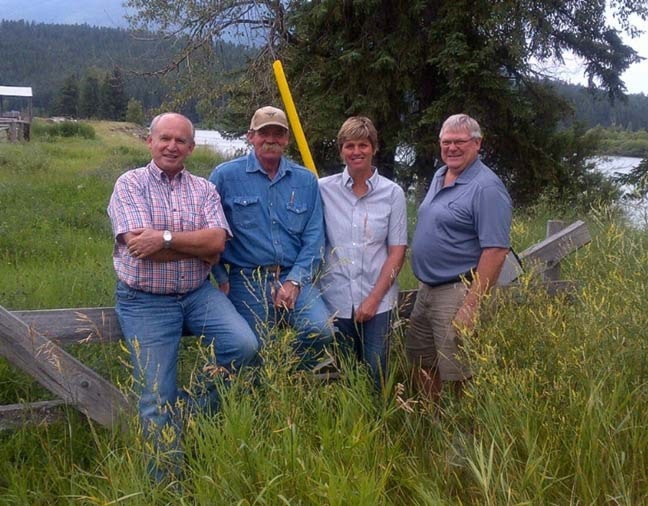The B.C. government has proposed major changes to the Agricultural Land Commission (ALC), opening the door for East Kootenay farmers to gain permission to use their properties for non-agricultural uses.
Kootenay East MLA and Energy and Mines Minister Bill Bennett announced the proposed changes Thursday, March 27, in the legislature, the result of the Liberal government's core review of government spending, which Bennett is leading.
"It's good news for everybody in the East Kootenay," Minister Bennett told the Townsman on Thursday. "Our economy has suffered over the years because land that hasn't been good for agriculture has been stuck inside the reserve and people just couldn't use it for the purposes they wanted to use it."
The improvements include the creation of two ALC administered zones to better recognize the province's regional differences.
The Kootenays will fall into the newly created Zone 2, along with the Interior and the North.
In Zone 2, where growing seasons are shorter and there are lower value crops, ALC decisions will now, in addition to the original principle of preserving farmland, include additional considerations to provide farmers with more flexibility to support their farming operations.
"This isn't going to change anything around good quality land – good quality land will continue to be protected," said Bennett. "But this will give us the opportunity to allow land that is not good for agriculture to be used, and that has a very strong impact on the economy."
The ALC will be given broader flexibility to consider non-agricultural home-based businesses, as well as value-added farming activities, such as food processing.
"It's a question of allowing a farmer or rancher to do some of his value-added work," said Bennett. "Let's say you want to do meat processing, or you're in the business of canning or making jams or cheese or wine. This will help farmers and ranchers do the full range of work related to their agricultural product where they live."
Acceptable uses will be determined through regulation in consultation with the ALC, the agricultural sector and UBCM.
"The new criteria for Zone 2 that must be considered is the economy, community interests, and social factors," said Bennett. "What that means on a specific level will be flushed out in conjunction with the agricultural organizations."
Decisions in Zone 1, which will include the Island, South Coast and Okanagan, will remain unchanged as land is in greater demand in these areas and there is development and population pressures.
Thursday's announcement also affirmed that the ALC will remain a fully independent tribunal and decision-maker and continue to make final decisions on specific land uses within the Agricultural Land Reserve (ALR).
"We really have left the commission fully in tact," said Bennett. "It's still governed by the main principle of the protection of farmland."
Under the proposed changes, the ALC will create six regional panels to strengthen regional decision making.
"If I was going to point to one aspect of the ALC that people in my region really don't like, it's the fact that they apply and they get turned down by, essentially, bureaucrats who live in the Lower Mainland and often never see the land," said Bennett. "This regional panel – it's far more likely that they are going to understand the personal circumstances of the land owner when they live in the region."
And the ALC will be tasked with developing service standards. For example, applicants will be provided with anticipated timelines for decisions and applicants will be provided with the opportunity to attend hearings where their applications are being determined and make a presentation.
It's not clear yet whether the planned review of the ALR boundaries in the East Kootenay will continue this year.
"That's going to be up to the commission," said Bennett. "I'm told they are fairly expensive. So it will be up to the commission to determine whether that still makes sense to do an expensive review of the boundaries, or in fact whether with these new criteria, the land can be managed more effectively with individual decisions by the commission."
Faye Street, general manager of Kootenay Livestock Association, congratulated the ministers "for having the three Bs in the male anatomy to get this done – starting at the brain, backbone and work your way down."
Street said young farmers are not entering the industry under the current conditions, and allowing them supplementary income will help maintain the farmers.
About five per cent of British Columbia's land base (4.7 million hectares) is in the ALR. The Kootenay region accounts for eight per cent of the land reserve, and produces 2.5 per cent of farm cash receipts.
According to Statistics Canada, almost half (49 per cent) of B.C. farms have annual sales less than $10,000 and three quarters (75 per cent) have annual sales less than $50,000.
In 2010, 52.6 per cent of all British Columbia farm operators had an off-farm job or business.
With files from Tom Fletcher.
